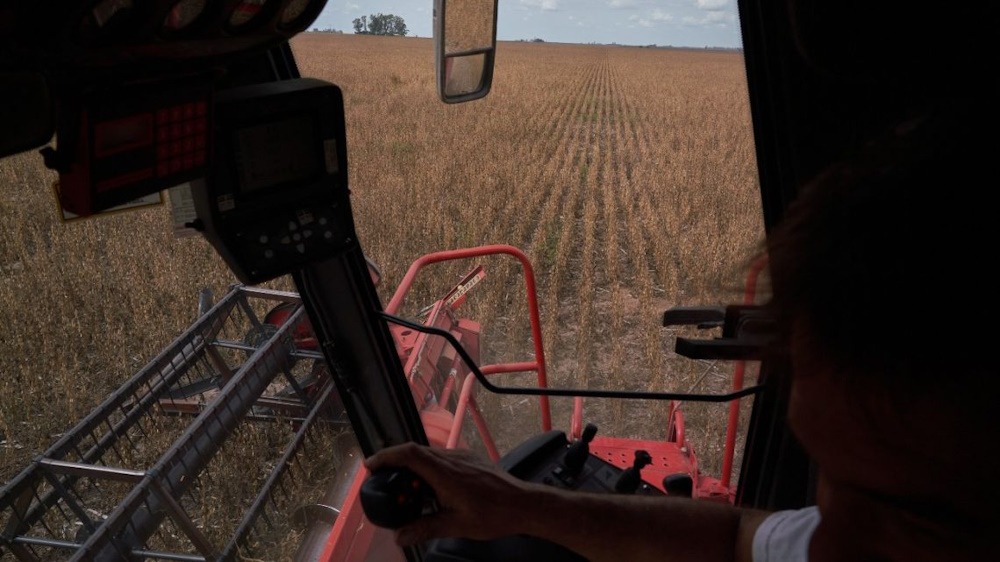Amid a dollar shortage, President Javier Milei’s announcement of a permanent reduction in farm export duties emphasizes the importance of facilitating hard currency flow in foreign exchange markets, potentially at the expense of fiscal accounts. The initiative seeks to encourage liquidations to mitigate exchange rate pressures in the lead-up to the midterms, thereby impacting tax revenue collection. While the sector has already realized the majority of the harvest, US$10 billion remains available, which could assist in managing potential fluctuations of the greenback.
Official and private estimates suggest that the fiscal impact of reducing farm export duties will amount to 0.2 percent of Gross Domestic Product (GDP) this year, with the government forgoing between US$500 and US$700 million. In principle, the reductions in export duties will not jeopardize the equilibrium of public finances, as they will be offset by heightened taxes associated with economic activity, such as value-added tax (IVA). The updated rates are as follows: soy at 26 percent (down from 33 percent), soy by-products at 24.5 percent (previously 31.5 percent), maize at 9.5 percent (down from 12 percent), wheat at 9.5 percent (previously 12 percent), sunflower seed at 5.5 percent (down from seven percent), and chicken and beef at five percent (previously 6.75 percent). The values align with those recorded from January to June of this year.
The timing selected by Milei and his Economy Minister Luis Caputo to implement this benefit for farmers is not incidental – the period of the temporary reduction of export duties concluded at the beginning of July. Nonetheless, the regulations allow for the dollars earned from exports to be cashed within a period of up to 15 days following the submission of the DJVE (Declaraciones Juradas de Venta al Exterior) sworn export statements. The deadline was achieved in mid-July, marked by a record inflow exceeding US$3.7 billion during that month. From that point, the cashing of rural earnings, exceeding US$15 billion annually, experiences a decline due to seasonal factors. The remaining funds are managed with caution, taking into account the fluctuations in the exchange rate, international prices, and interest rates.
The permanent reduction of export duties aims to stimulate sales abroad in the coming months, ensuring that the supply of foreign exchange remains stable amid persistent import demand and the typical pre-electoral dollarisation that has contributed to the recent appreciation of the US currency over the past six weeks. “The reform of export duties has been implemented in a context characterized by significant financial volatility, compelling the government to adopt measures aimed at alleviating the pressure on the exchange rate. In recent weeks, the Central Bank has been compelled to significantly raise interest rates—exceeding an annual 100 percent in certain instances—while also engaging in direct market interventions to prevent sharp fluctuations in the exchange rate,” emphasized a report by the CEPEC (Centro de Estudios Políticos y Económicos) think tank.
Dante Romano, a professor at the Agribusiness centre of Universidad Austral, projected that approximately US$10 billion could be realized by December. However, he cautioned that the rate of this realization “could be somewhat slower in the short term because there was a lot of anticipation up to June 30.” “At the commencement of the harvest period in April, the sales figures for farmers, the influx of foreign currency, and the reported sales abroad (DJVE) were significantly lagging.” As the harvest commenced robustly, necessitating both physical space and financial liquidity, farmers expedited their sales alongside the DJVEs. However, from May 20 onward, a downward trend emerged when it became apparent that export duties would increase once more on June 30,” described Romano.
The consultant indicated that farm sales increased from 150,000 tons to a range of 200,000-300,000, with occasional peaks reaching 500,000 tons. Following the conclusion of the period characterized by reduced export duties, sales reverted to approximately 100,000 tons. “The accumulated farm sales as of June 30 remained at 40 percent, surpassing the average of 35 percent, while exporters also submitted more DJVEs than usual.” Thereafter, a complete standstill ensued. Had export duties not decreased, sales, DJVEs, and the influx of hard currency would have faced a complete halt. The anticipated liquidations are expected to continue until mid-August, at which point the usual pace is expected to resume,” he added.
Concerning the unsold grain, more than fifty percent of the soy remains without a price. Sales will proceed at a more gradual yet steady pace until the conclusion of the year. In contrast, maize is lagging, with 37 percent sold compared to an average of 45 percent for this period. An IDESA (Instituto para el Desarrollo Social Argentino) report noted that the reduction of export duties “is very marginal relief for production but a major fiscal effort for the state since it represents two-thirds of the financial surplus. Lower export duties will generate increased revenue for other taxes like income, IVA, gross earnings, stamps and municipal taxation, partially compensating the loss of income for the national state,” the report indicated.
Portfolio Personal Inversiones (PPI) stated that the measure “will ease the margins of the sector in remote zones, which had shrunk to the point of turning negative” and, given that, “it could have a positive impact on the decisions regarding early and late sowing for the 2025-26 harvest for heavy crops (soy and maize) when neither early nor late sowing has kicked off. They could thus anticipate an at least marginally higher production for the next harvest.” Secondly, the elevated exchange rate may incentivize farmers to sell their stored grain, potentially leading to increased exports; however, the net impact on the exchange rate remains uncertain,” they concluded.

